What are some terms associated with bonds?
Terminology
The following section outlines common terminology associated with bonds and debentures:
- Principal, Nominal or Face Value: Typically in $1,000.00 increments this is the dollar amount the issuer will calculate and pay interest and it is the amount the issuer agrees to pay the holder at the bond’s maturity date.
- Maturity Date: This is the date at which the issuer has agreed to pay the bond’s Face Value to the bondholder. Bonds are classified by the time remaining to their maturity dates into three basic categories.
-Short-term bonds mature in 3 years or less,
-Medium term bonds mature between 3 and 10 years,
-Long-term bonds mature in 10 years or longer.
- Issue Price: This is the price that the bond was originally issued at in the Primary market. Typically, bonds are issued and priced in terms of $100.00.
- Coupon: Expressed as a percentage, this is the interest rate the bond’s issuer has agreed to pay the bondholder each year. The coupon is applied to the bond’s Face Value to calculate the annual interest payment by the issuer. For example if an investor holds a bond with a Face Value of $10,000 and a Coupon of 5.0%, then the issuer will pay the bondholder $500.00 (5.0% of $10,000 ) per year.
- Coupon Dates: These are the dates the issuer agrees to make the Coupon interest payments. Most bonds will pay the annual coupon interest in two equal semi-annual payments. The dates are usually established by the bond’s initial issue date. For example, if our 5.0% bond with a $10,000 Face Value has semi-annual Coupon Dates and it was issued on December 1st, then the issuer will pay the bondholder $250.00 on June 1st and December 1st, every year up to the bond’s Maturity Date.
- Current Yield or Yield to Maturityis expressed as a percentage and it is calculated by adjusting the total interest income earned from the bond from the date of purchase to the date of sale or maturity by all Capital Gains or losses. Essentially, Yield to Maturity is a way to calculate the total amount an investor will earn from a bond.
Example: If an investor pays $950.00 for a $1,000 Par/Maturity Value bond that matures in three years and it has a 5.0% Coupon, then the Yield to maturity can be estimated as follows. To keep the calculation simple, the coupon rate is assumed to be compound interest, which assumes the investor will reinvest the interest income at the same coupon rate:
1) The investor will earn $50.00 per year ($1,000 X 5.0%) for a total interest income of $150.00 over the three-year period.
2) If held to maturity, the investor will also earn $50.00 ($1,000 less $950).
3) As a result the investor will have earned $200.00 or 21.0% ($200 divided by $950) over the three years the bond was owned.
4) Therefore, from the date of purchase, the yield to maturity would be 7.0% per year (21% total return divided by 3 years).
Note: If this bond is held in a taxable account, the investor’s after-tax return would be enhanced because the $50.00 difference between the bond’s Par/Maturity value and the price paid will be taxed preferentially as capital gains.
Another to demonstrate how important a bond’s purchase price is in determining an investor’s rate of return, consider a bond purchased at a premium to the bond’s Par/Maturity value:
1) The same three-year, 5.0% coupon, $1,000 Par value bond is purchased for $1,050.
2) The investor will earn $50.00 per year ($1,000 X 5.0%) for a total interest income of $150.00 over the three-year period.
3) If held to maturity, the investor will also lose $50.00 of tax-paid capital ($1,000 less $1,050).
4) As a result the investor will have earned $100.00 or 9.5% ($100 divided by $1,050) over the three years the bond was owned.
5) Therefore, from the date of purchase, the yield to maturity would be 3.17% per year (9.5% total return divided by 3 years).
Note:If this bond is held in a taxable account, the investor’s after-tax return would be less than the calculated yield to maturity because the $50.00 difference between price paid and the bond’s Par/Maturity value is actually returned to the investor, over the life of the bond, in the form of taxable interest income.
For additional details on bond pricing, see Bond Market and Pricing Issues.
Related Questions
- What are some common features associated with bonds?
- How does the bond market work?
- How are bonds priced?
- Where can I go to get up-to-date trading information for bonds?
- How do interest rates influence a bond’s market price?
- Does inflation have an impact on bond pricing?
- Do bond maturity dates influence pricing?
- Do credit and default risks impact bond prices?
- What are the definitions of the corporate credit ratings from the DBRS?
- What is the DBRS rating philosophy?
- What is bond liquidity?
- What does it mean to purchase a bond at a premium?
- What does it mean to purchase a bond at a discount?
- What is accrued interest income?

